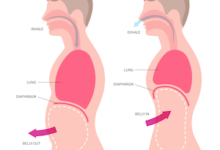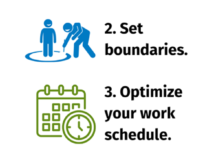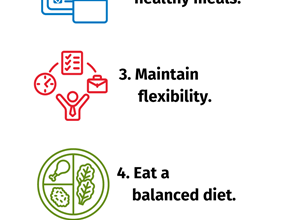What Is A Cleanse And Is It Safe?
We’ve posted several blogs recently focusing on nutritional trends and diets that have been popular in the media over the past several years. I’m not sure about you, but I have encountered several colleagues, friends, and patients mentioning they were “cleansing” or “detoxing” and I have to admit, I did try a juice cleanse of sorts a few years ago. So, what is a cleanse? And are they safe?
Typically, when someone refers to a “cleanse” or “detox,” they are referring to using an approach to remove toxins from the body, lose weight, or promote health. It may involve fasting, drinking only juices or similar beverages or foods over a specified time period, or ingesting dietary supplements or commercially available shakes or drinks over a specified time period. Other types of cleanses involve colonic cleanses using enemas, laxatives, or colon hydrotherapy (colonics). Given that many of these programs typically restrict calories, weight loss is common but there is no compelling scientific evidence that these methods are effective for long term weight management, for eliminating toxins in the body, or for improvement in overall health.
Terminology
Let’s review some of the terminology associated with cleanses and detoxes.
Juice cleanse
A juice cleanse is a liquid only (sometimes smoothie) program that replaces solid food typically with fruit or vegetable-based liquids. It may last days to weeks depending on the particular program. Many companies sell their own version of branded cleanses and may provide their own set of rules, guidelines and supplements with a schedule to follow. In some programs, there is minimal fat, calcium, and protein ingestion as well as caloric restriction during the cleansing period.
Colon cleanse
A colon cleanse may involve laxatives, supplements, colon irrigation (also referred to as hydrotherapy or colonics). There are various methods; the most extreme involve irrigation of large amounts of water and possibly other substances, including herbs or coffee, which may be irrigated and flushed out of the bowel or left to instill in the colon for a given amount of time. While supporters believe this method allows cleaning of toxins from the gastrointestinal tract, there is minimal scientific data suggesting this is effective.
Elimination diet
Elimination diets come in many versions, often promoted as a type of cleanse by eliminating one or multiple food categories (for example dairy, meat, or soy) from the diet for a specified period of time. There is a medical version of this program that is effective in diagnosis of food intolerances, but it’s not intended for weight management.
What are the risks associated with cleanses and detoxes?
As nurses, we should be aware of any safety risks cleanses and detoxes could pose for our patients. The National Institutes for Health’s Center for Complementary and Integrative Health (2019) highlights the following as key areas of concern for those participating in cleanse or detox programs:
- Unpasteurized juices. Patients should be aware of pasteurization processes if they are purchasing a pre-packaged cleanse program. Unpasteurized juice may contain bacteria and is not recommended for infants, children, older adults or anyone immunosuppressed or at high risk for infection.
- Avoid high oxalate intake. Many juices are high in oxalate including beets, spinach, collard greens, kiwi, parsley, and soy. In those with kidney disease, oxalate clearance may be suboptimal; furthermore, calcium intake is limited with some juice cleanses and calcium aids in oxalate clearance. In a 2013 case report, Getting et al. describes a patient that participated in a juice fast and ultimately developed oxalate nephropathy requiring short-term hemodialysis. While this is a rare case, it is important to understand potential risks.
- Glycemic control in diabetic patients. In those with diabetes, a very low caloric intake or high intake of fruit juices (sugar) may require changes to insulin regimen during the term of the cleanse program.
- Colon irrigation. There are many associated risks with technique, including bowel perforation, infection, dehydration and electrolyte imbalance. Colon irrigation should be avoided in patients with a history of colon surgeries, hemorrhoids or anatomic colon abnormalities. Other colon cleanses involving laxatives carry risk for dehydration and electrolyte imbalances due to GI volume losses.
- Dehydration and electrolyte abnormalities. For all diet programs and calorie restriction programs, especially in those that promote bowel cleansing, patients are at risk for dehydration and electrolyte disturbances. In another case report published by BMJ (2017), Toovey et al. describe a patient who developed life-threatening hyponatremia with neurologic complications after doing a “New Year’s Detox” program which involved a combination of excessive water and tea intake with valerian root. Severe hyponatremia can lead to seizures and significant neurologic symptoms, and is typically treated in the intensive care unit.
What’s the bottom line?
There are significant health risks associated with “cleanses” and “detoxes” and while some programs may provide optimal nutrition, this is not the norm. Furthermore, there is no scientific evidence to support these programs’ effects on long-term weight management or overall health. It is important that for those patients that choose to utilize these programs, they are made aware of the risk and safety concerns. We should be counseling them to not only thoroughly understand what they are ingesting and the potential impact these agents will have on their medication regimen and underlying health conditions, but also to understand any important nutritional deficiencies the particular program places them at risk for. For most of us, the best thing we can do to keep our bodies “clean” and free of toxins is to keep our liver healthy. The American Liver Foundation suggests, for optimal liver health, patients should maintain a healthy weight, eat a balanced diet, exercise daily, avoid toxins (pesticides, aerosols, chemical, additives), avoid illicit drugs, use alcohol in moderation, and employ practices to avoid infectious hepatitis (American Liver Foundation, 2013). Empowering our patients with knowledge is key in promoting healthy choices.
References:
American Liver Foundation, (2013, October). 13 Ways to a Healthy Liver.” Retrieved from https://liverfoundation.org/13-ways-to-a-healthy-liver/
Getting, J.E., Gregoire, J.R., Phul, A., & Kasten, M.J. (2013). Oxalate nephropathy due to ‘juicing’: case report and review. The American Journal of Medicine, 126(9), 768-772. doi: 10.1016/j.amjmed.2013.03.019
National Institutes of Health (NIH) National Center for Complementary and Integrative Health, (2019, September). “Detoxes” and “cleanses”: What you need to Know. Retrieved from https://nccih.nih.gov/health/detoxes-cleanses
Toovey, O.T.R., Edmond, I.R., & Makris, N. (2016). Acute severe hyponatraemia secondary to polydipsia and associated herbal remedy use. BMJ Case Reports 2016. doi: 10.1136/bcr-2016-216348






